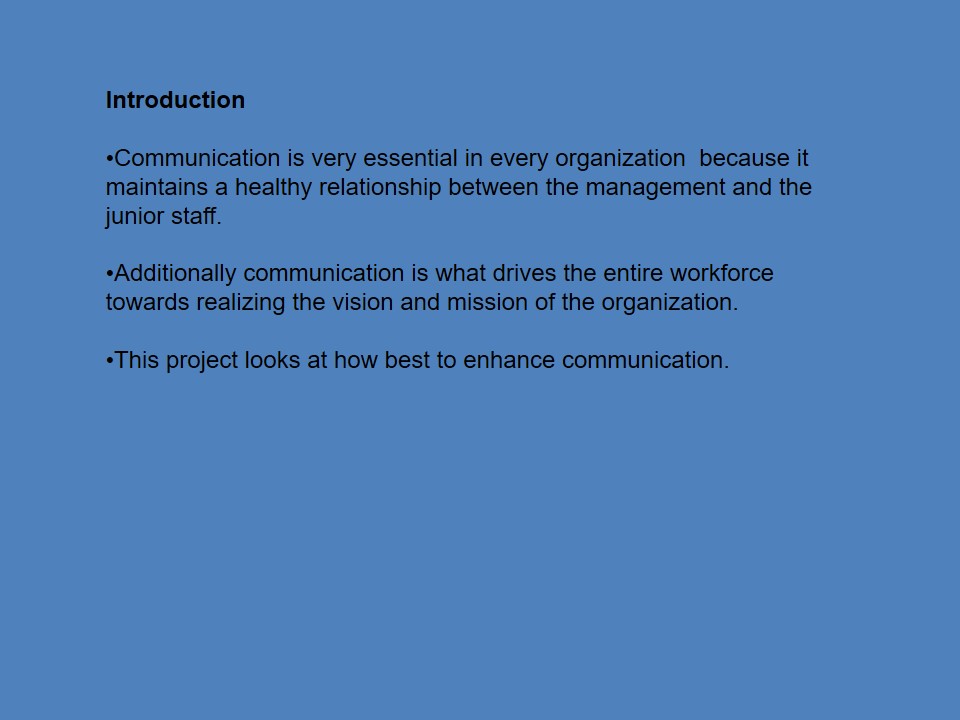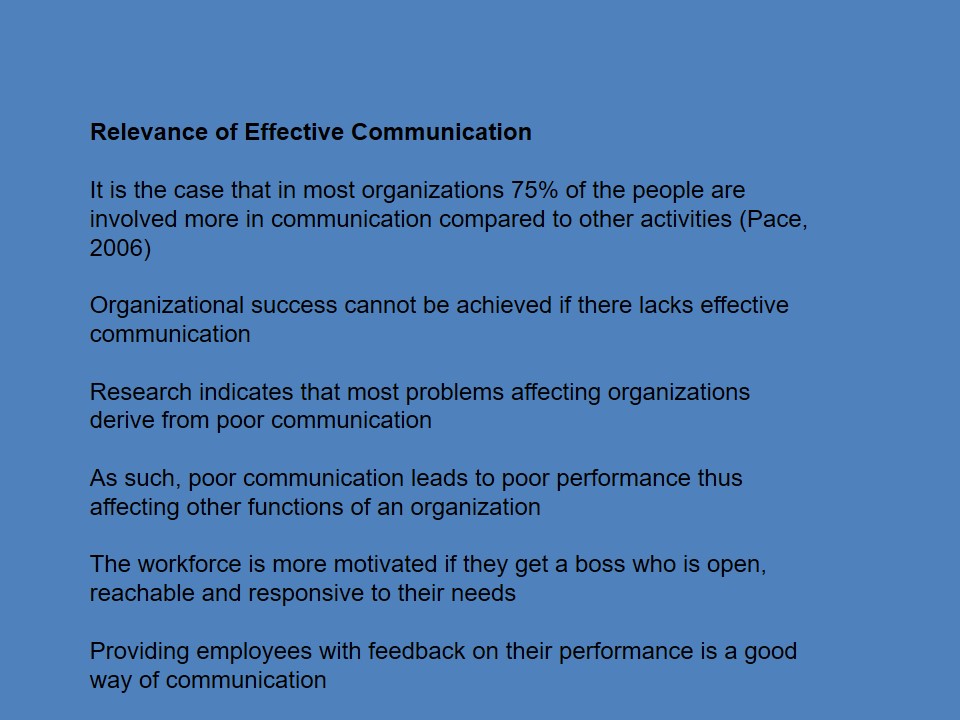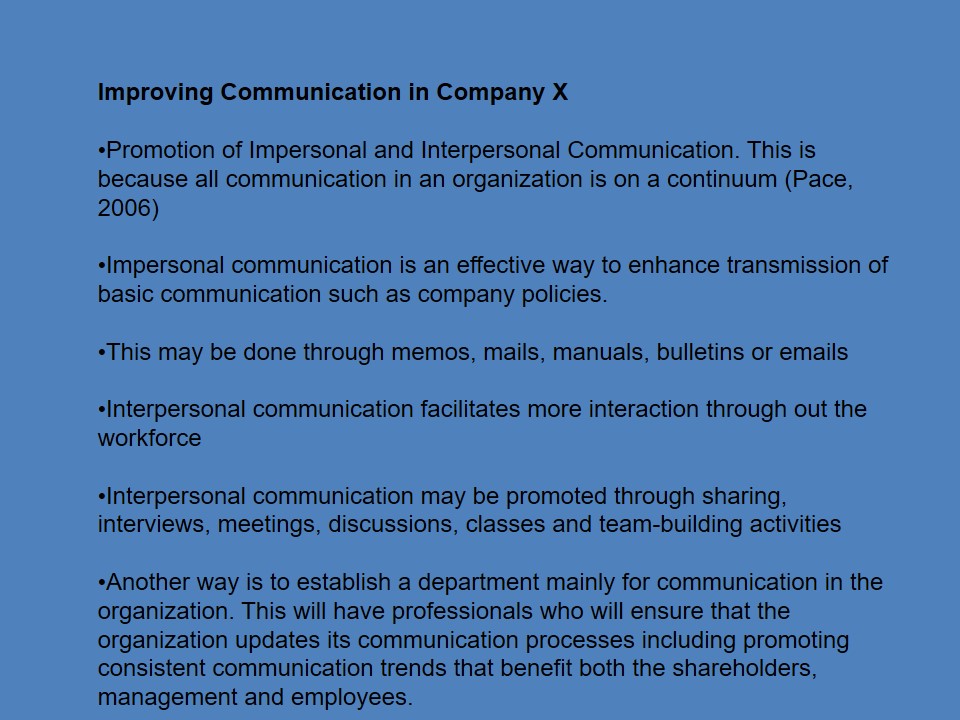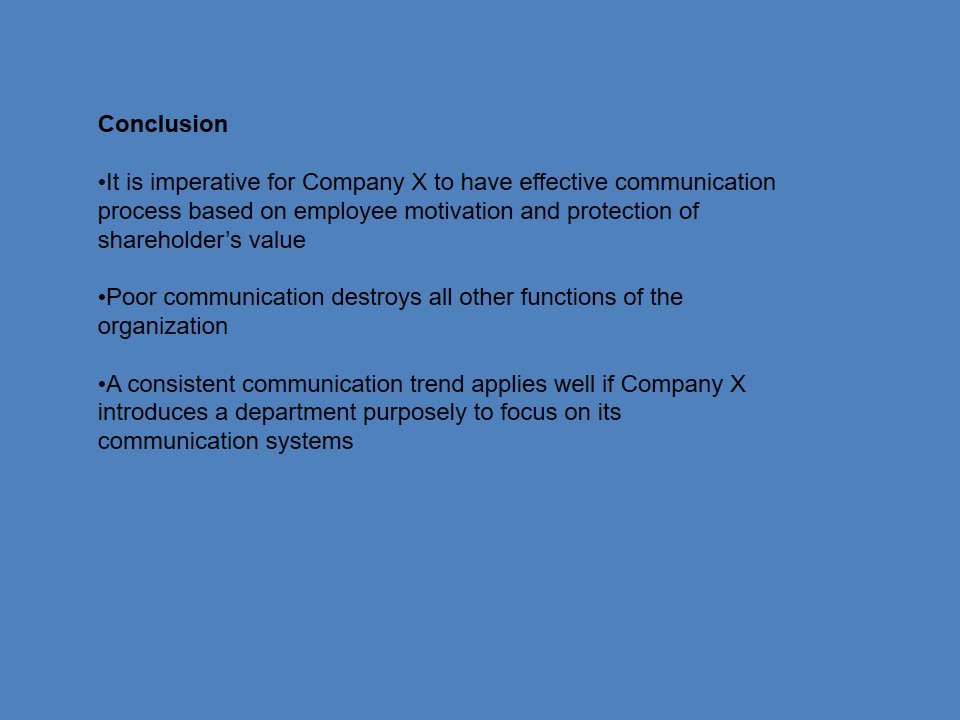Introduction
- Communication is very essential in every organization because it maintains a healthy relationship between the management and the junior staff.
- Additionally communication is what drives the entire workforce towards realizing the vision and mission of the organization.
- This project looks at how best to enhance communication.

Meaning of Communication
- Communication refers to the exchange of feelings, information, ideas. This can be done through writing, signs, way of acting or speaking (Pace, 2006).
- Therefore, it involves passing knowledge or information.
- Transmission of information, ideas or thoughts in a manner that can be fully understood by the recipient.
- Communication enhances openness in all interactions.
- Communication does not stop at updating the employees about the goals of the organization.
- Communication may be carried out formally or informally.
- All persons in the organization must be involved in promoting effective communication (Pace, 2006).

Relevance of Effective Communication
- It is the case that in most organizations 75% of the people are involved more in communication compared to other activities (Pace, 2006).
- Organizational success cannot be achieved if there lacks effective communication.
- Research indicates that most problems affecting organizations derive from poor communication.
- As such, poor communication leads to poor performance thus affecting other functions of an organization.
- The workforce is more motivated if they get a boss who is open, reachable and responsive to their needs.
- Providing employees with feedback on their performance is a good way of communication.

Improving Communication in Company X
- Promotion of Impersonal and Interpersonal Communication. This is because all communication in an organization is on a continuum (Pace, 2006).
- Impersonal communication is an effective way to enhance transmission of basic communication such as company policies.
- This may be done through memos, mails, manuals, bulletins or emails.
- Interpersonal communication facilitates more interaction through out the workforce.
- Interpersonal communication may be promoted through sharing, interviews, meetings, discussions, classes and team-building activities.
- Another way is to establish a department mainly for communication in the organization. This will have professionals who will ensure that the organization updates its communication processes including promoting consistent communication trends that benefit both the shareholders, management and employees.

Conclusion
- It is imperative for Company X to have effective communication process based on employee motivation and protection of shareholder’s value.
- Poor communication destroys all other functions of the organization.
- A consistent communication trend applies well if Company X introduces a department purposely to focus on its communication systems.

References
Pace, J. (2006). The workplace: Today and tomorrow. The Professional Development Series: Book One. Boston: McGraw-Hill. Web.
Pace, J. (2006). The workplace: Interpersonal strengths and leadership. The Professional Development Series: Book Two. Boston: McGraw-Hill. Web.
Pace, J. (2006). The workplace: Personal skills for success. The Professional Development Series: Book Three. Boston: McGraw-Hill. Web.
Pace, J. (2006). The workplace: Chart your career. The Professional Development Series: Book 4. Boston: McGraw-Hill. Web.